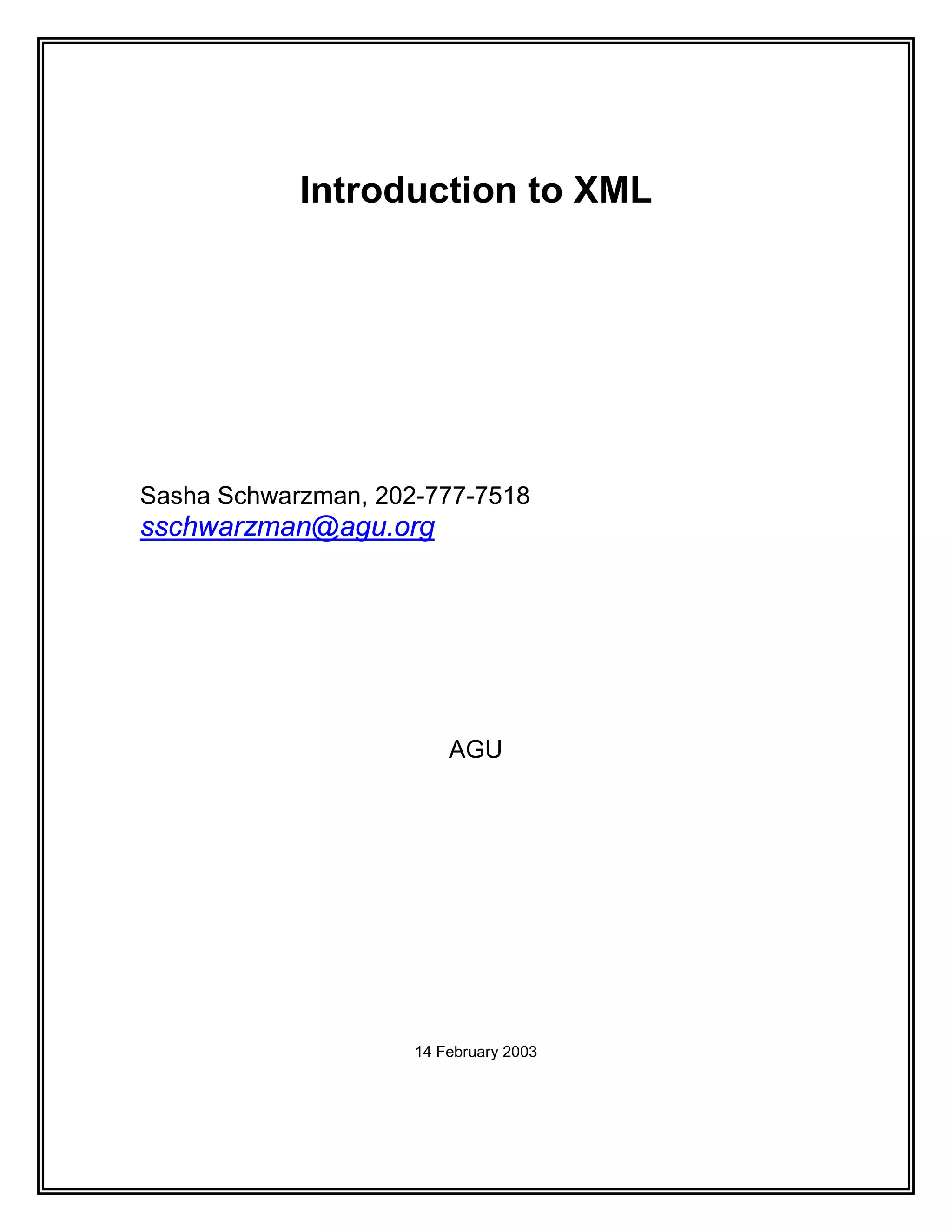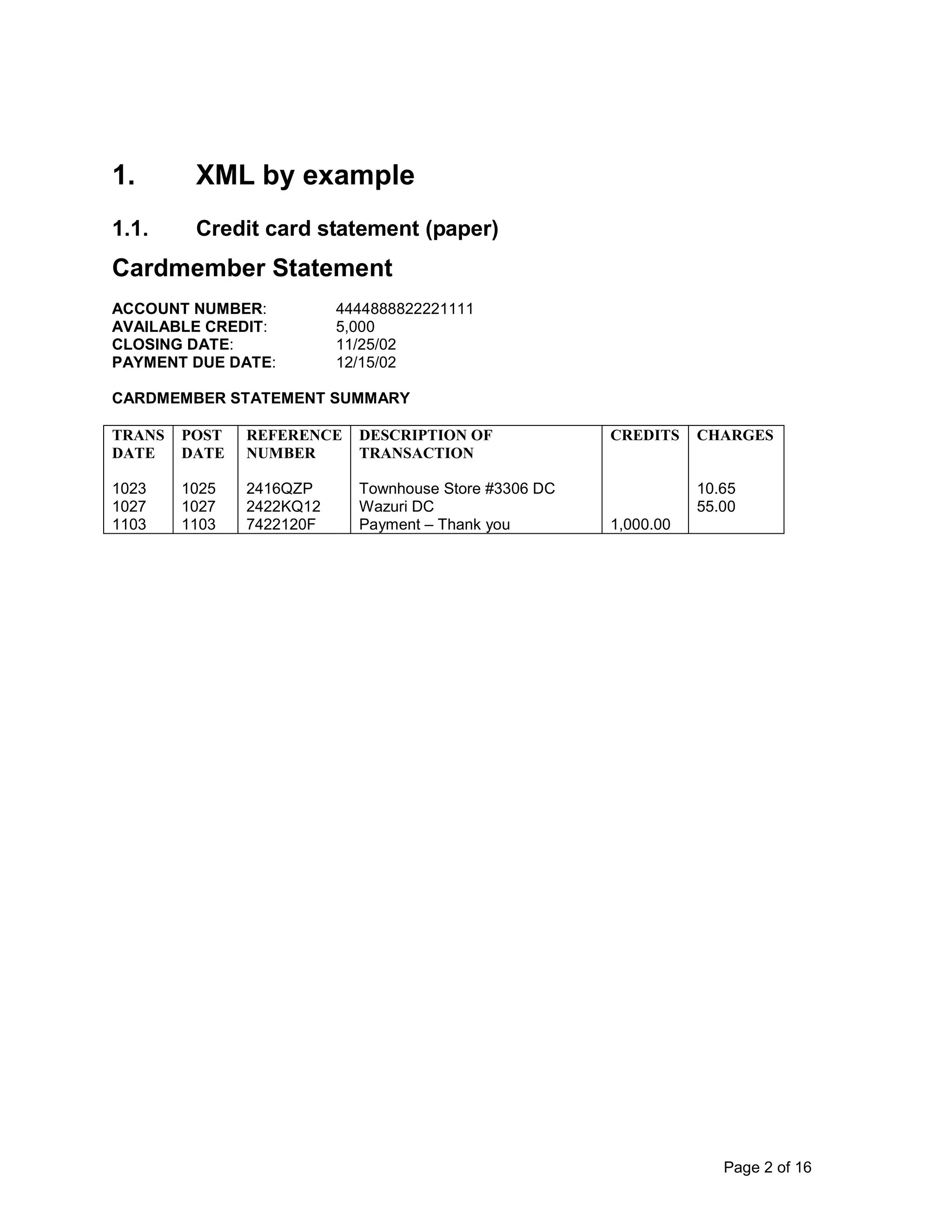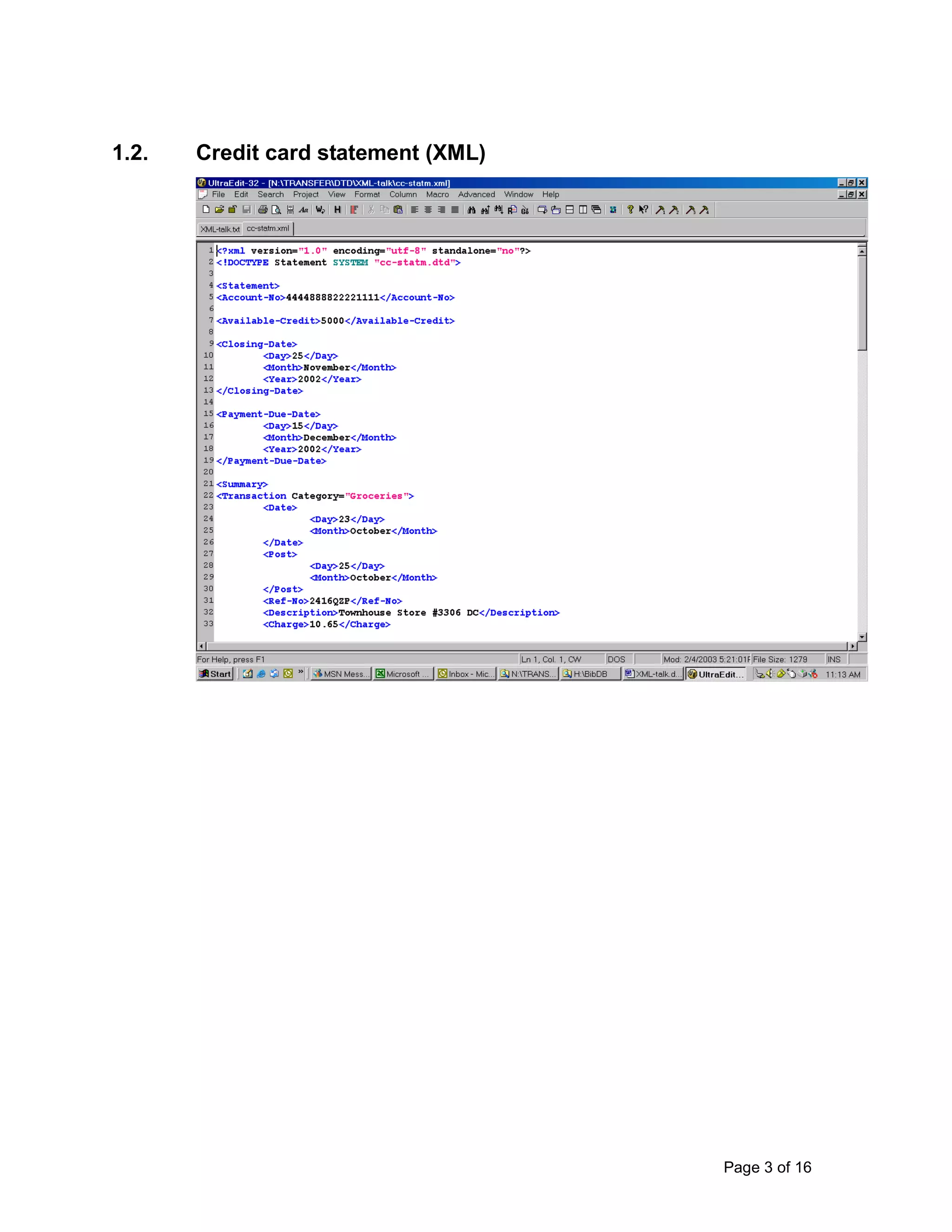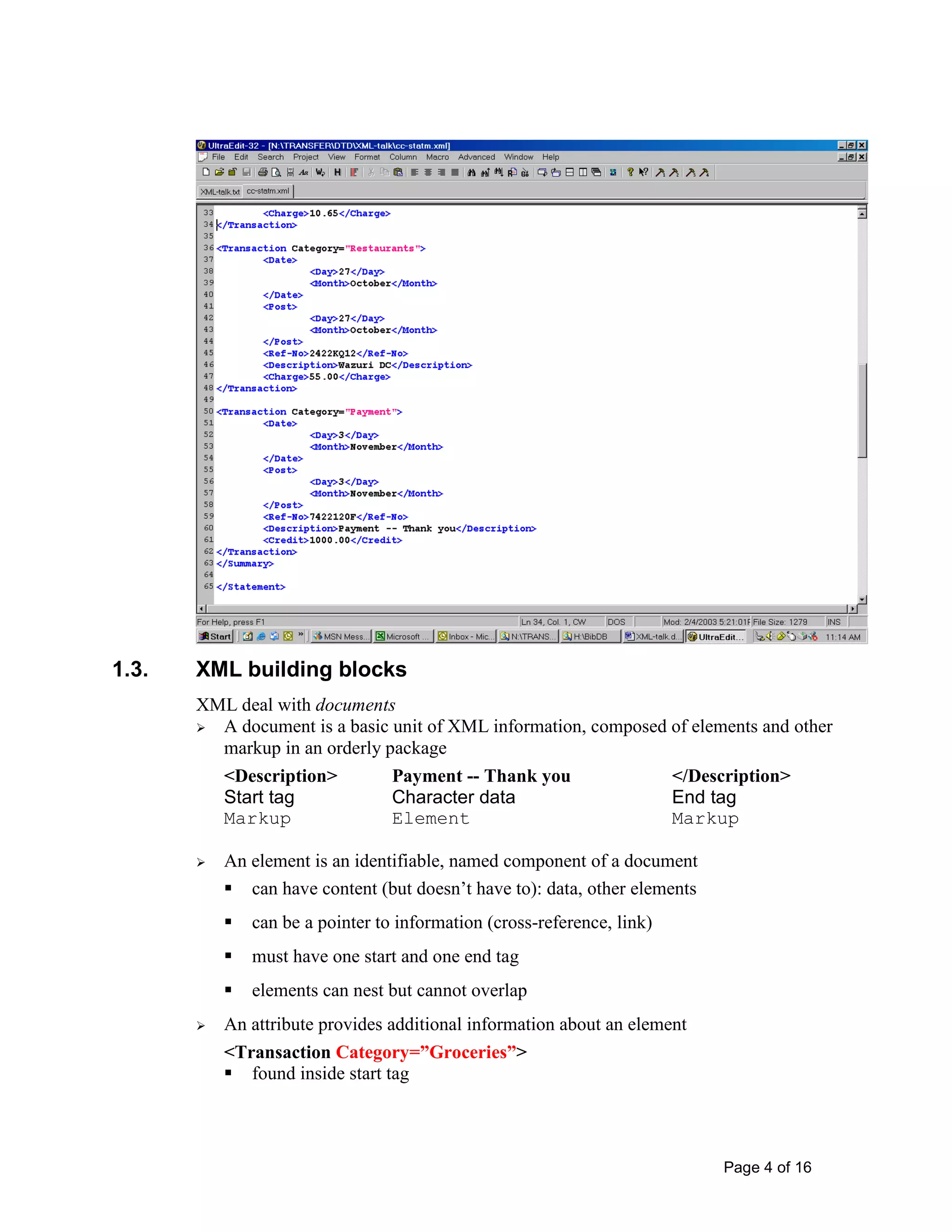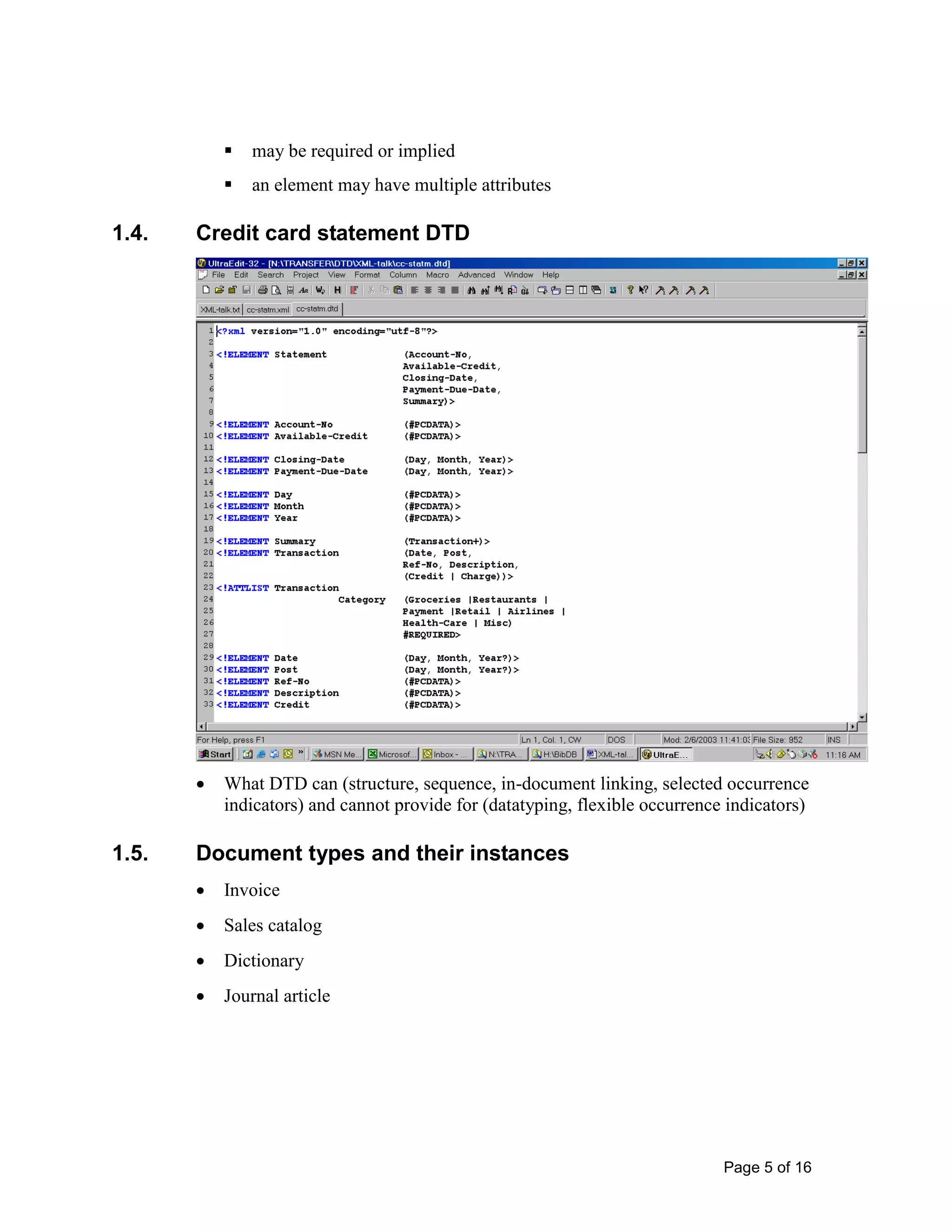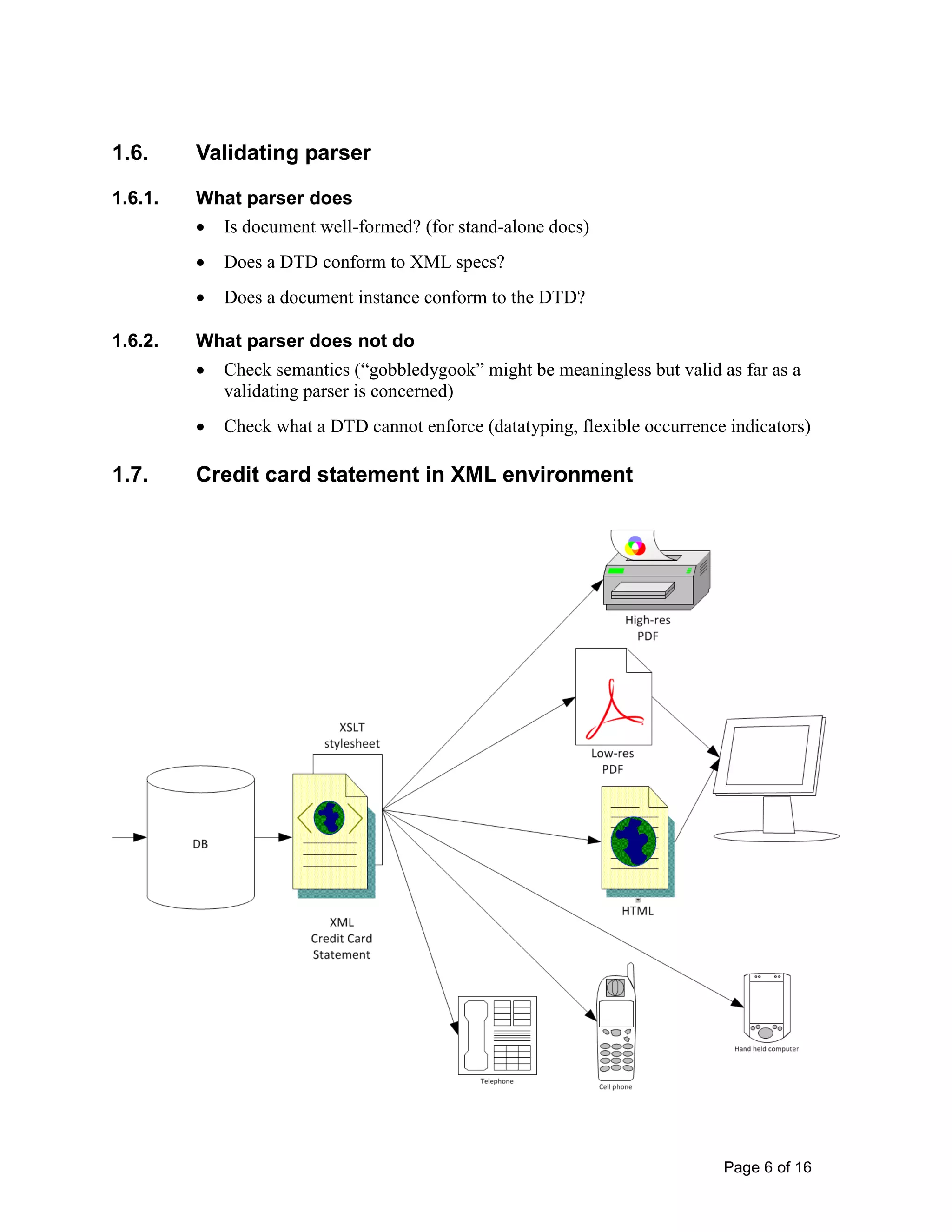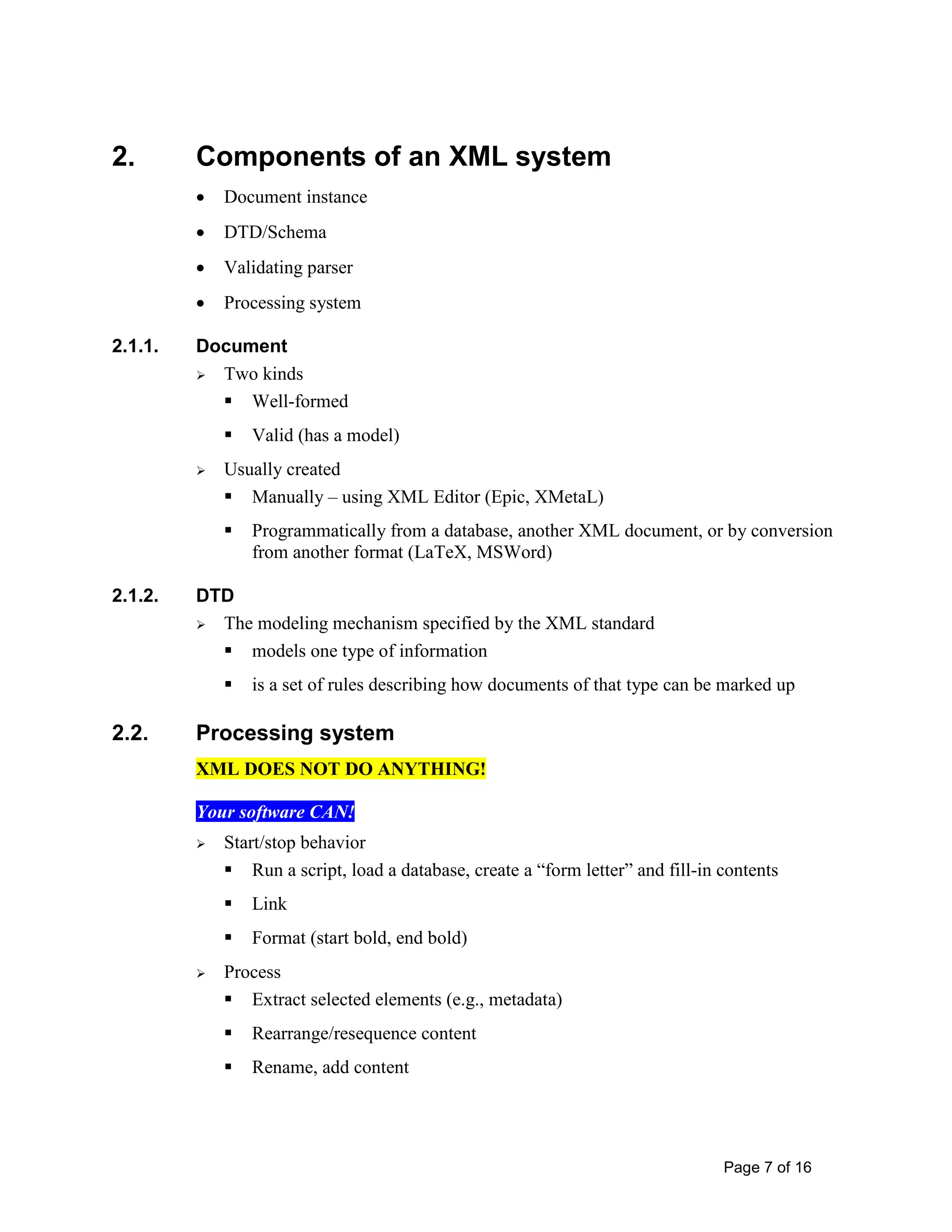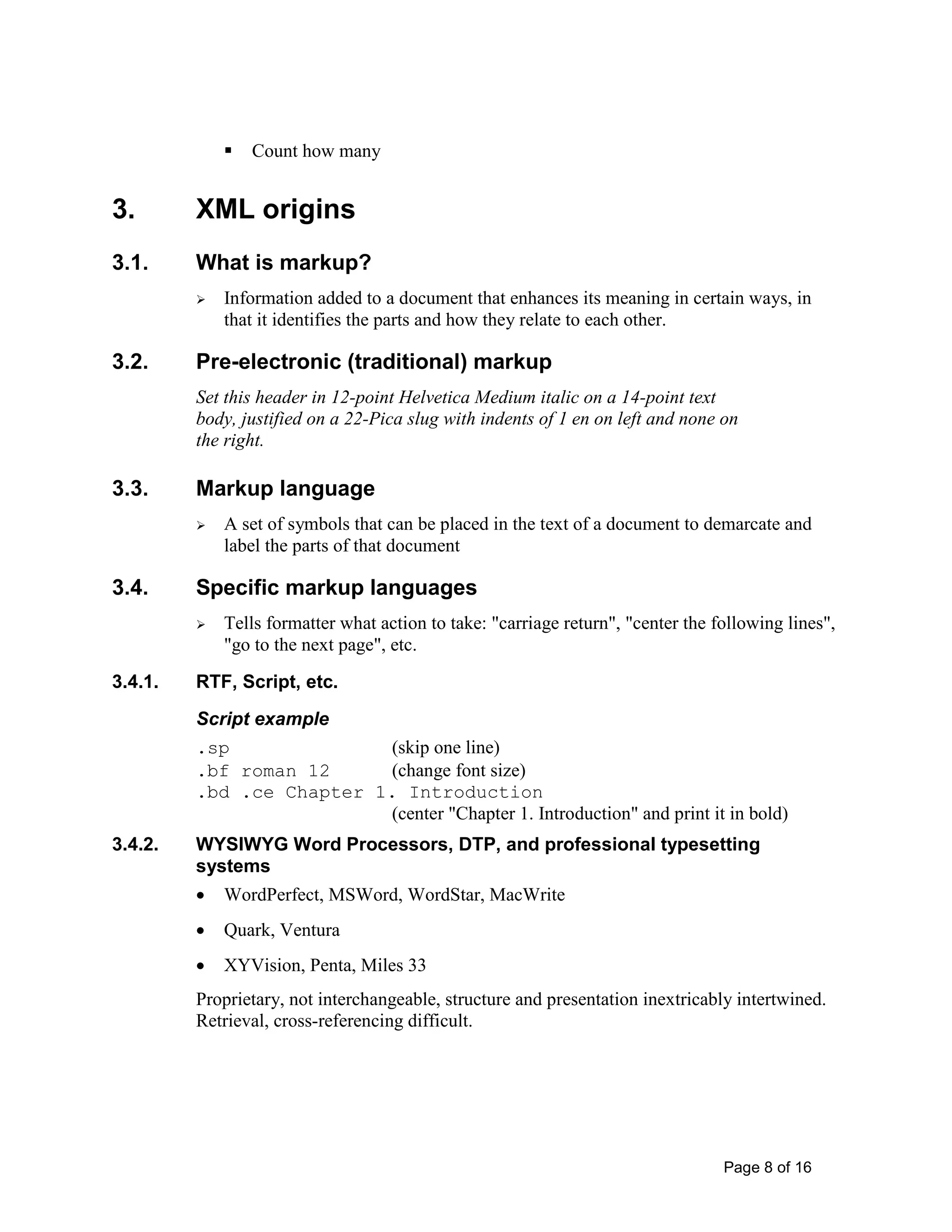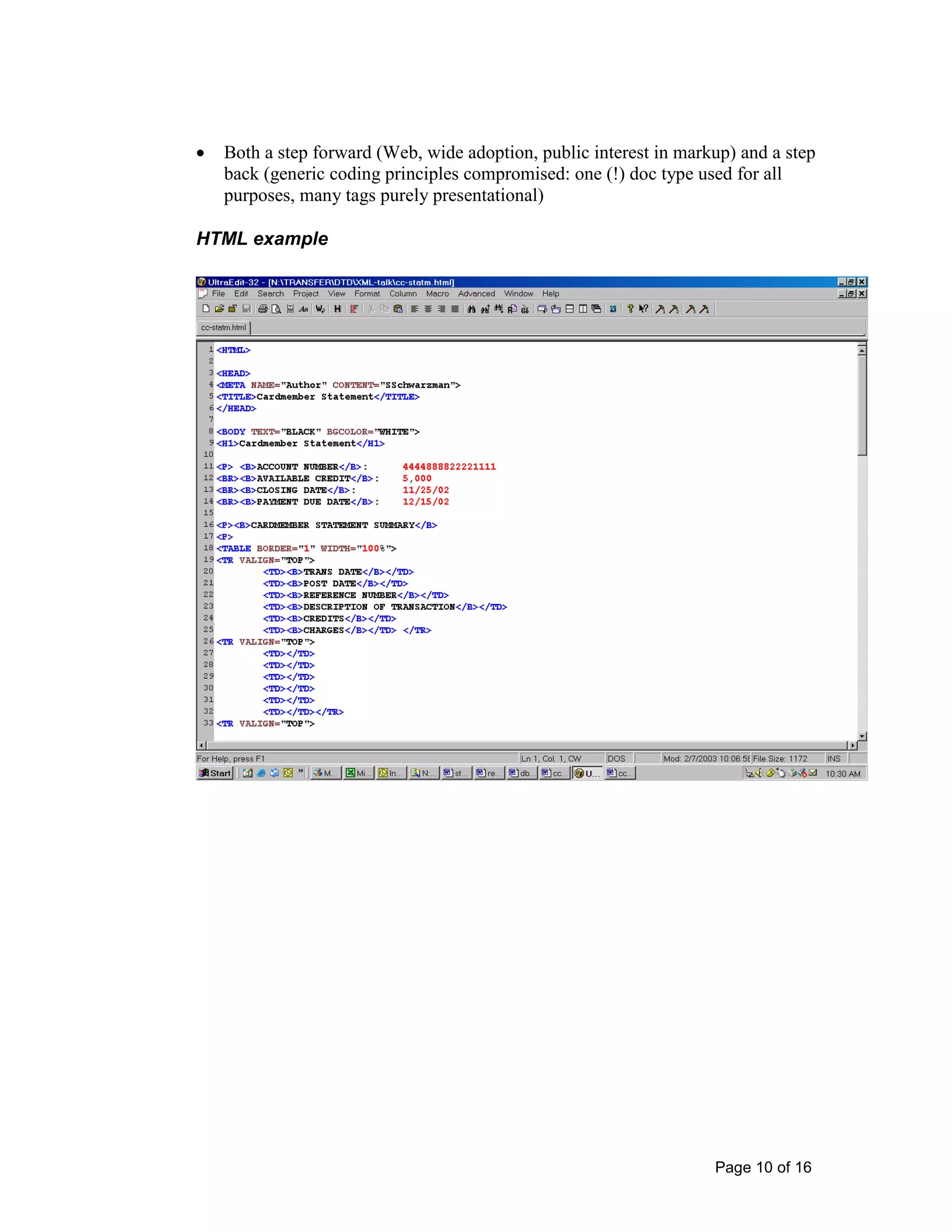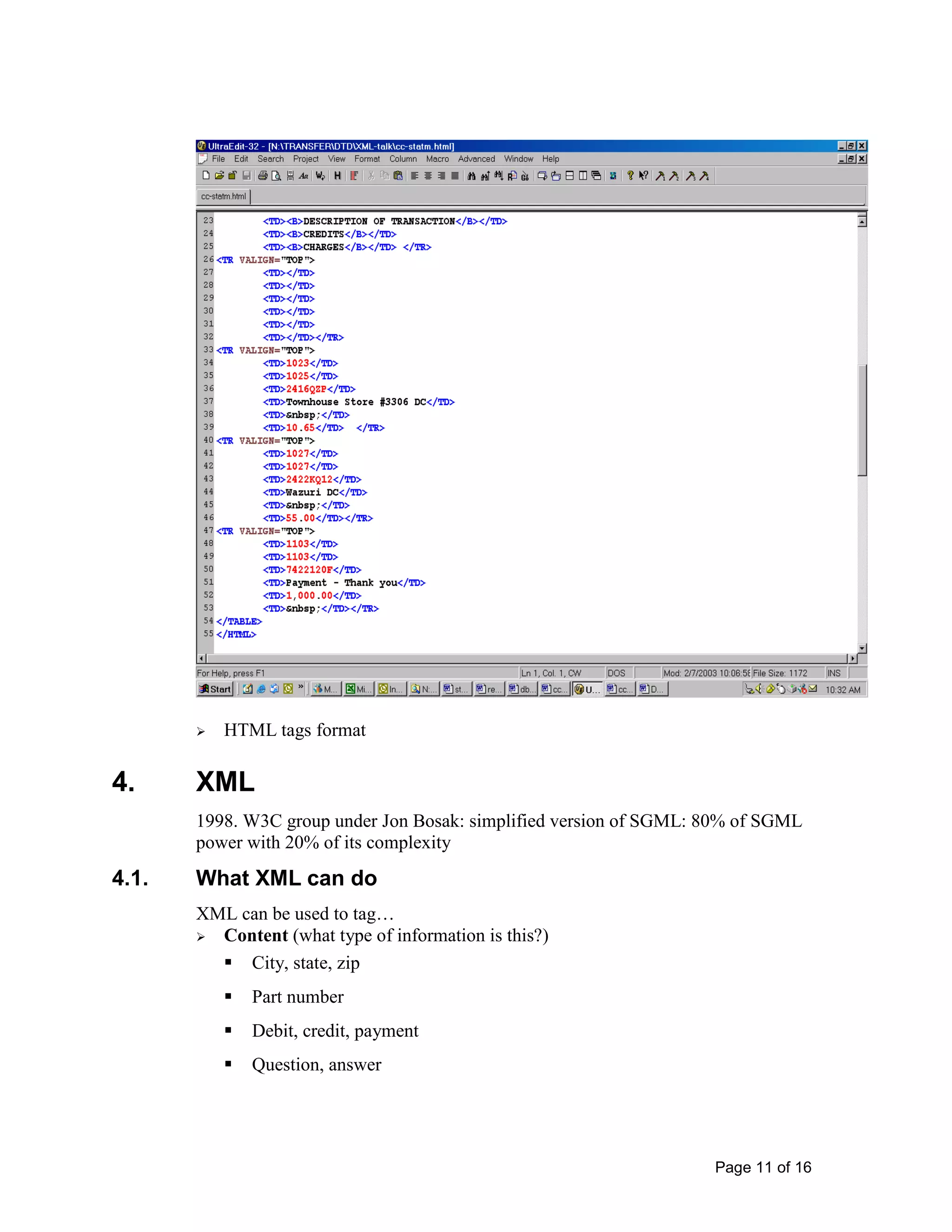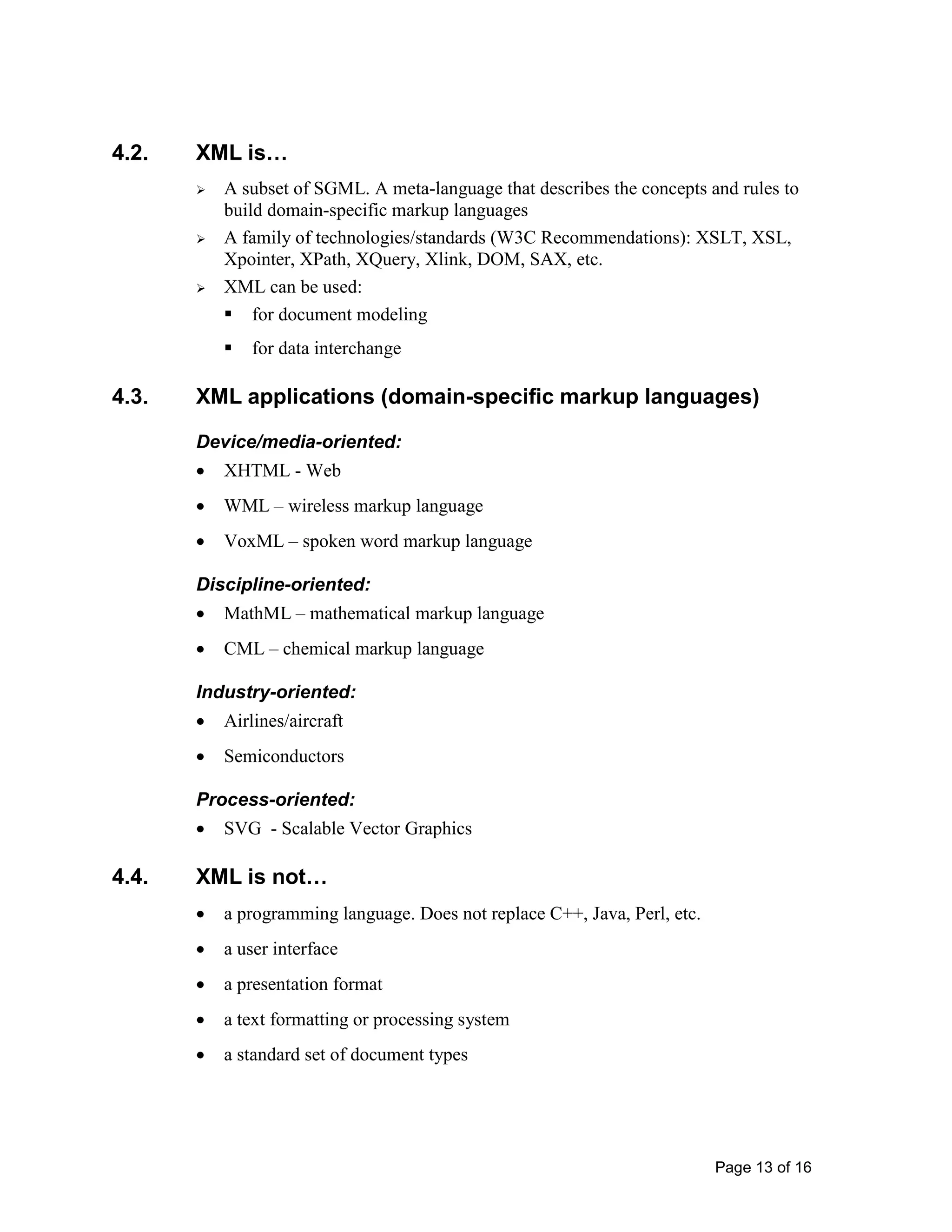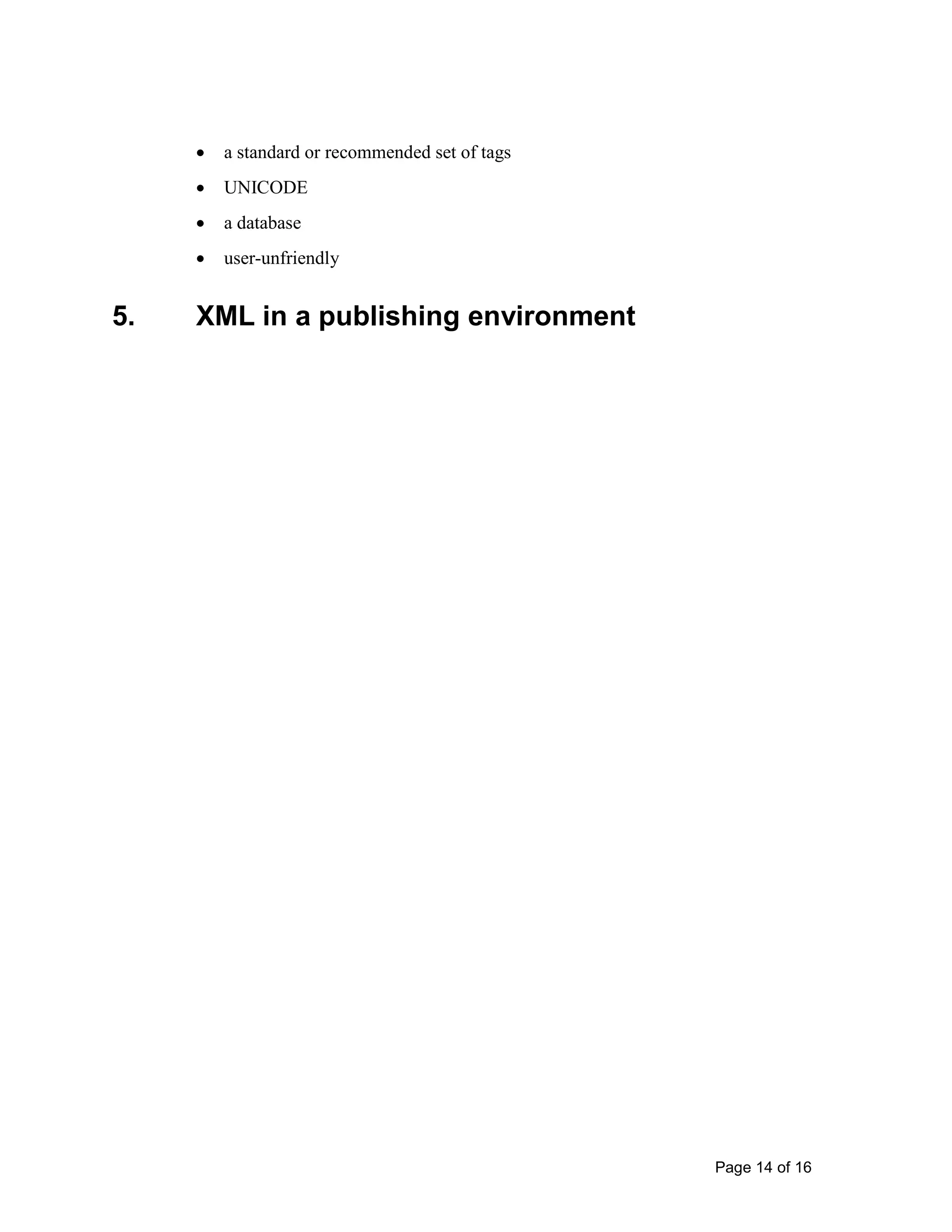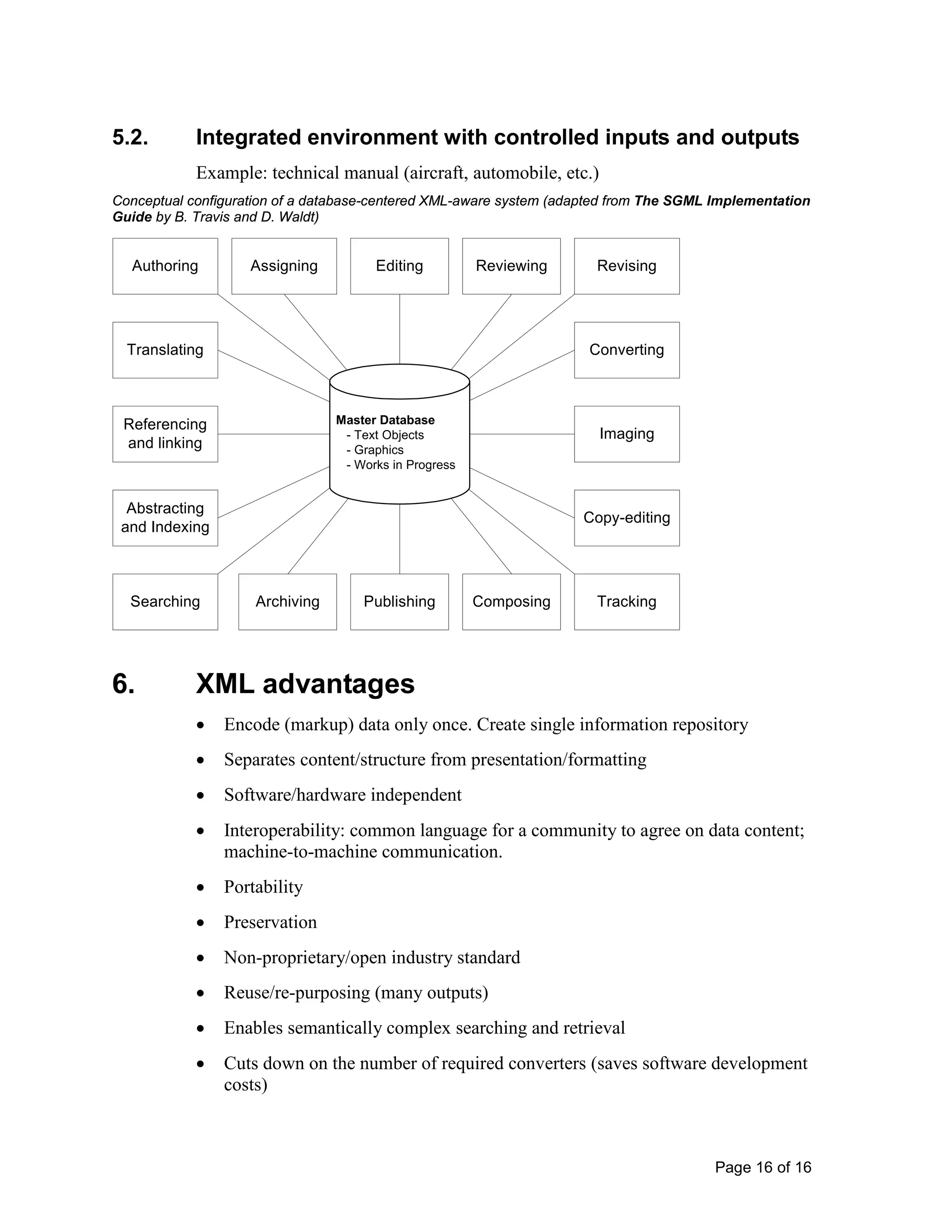XML is a markup language that allows users to define their own tags to structure documents. It separates content from presentation, allowing content to be reused in different formats. XML has advantages like encoding data only once, separating content from formatting, enabling interoperability and machine-to-machine communication, and allowing content to be ported and preserved more easily. XML is not a programming language but a meta-language used to build domain-specific markup languages for different applications and industries.
